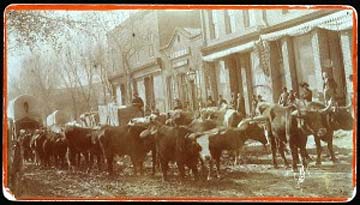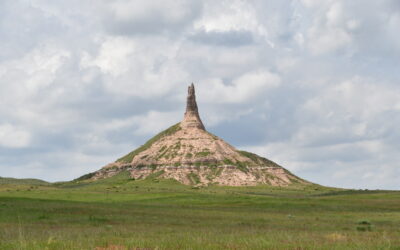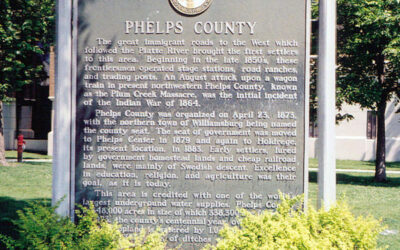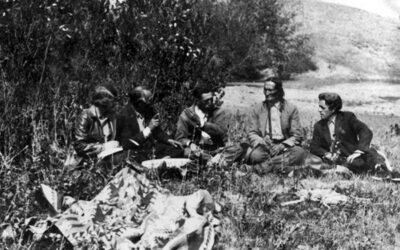A description of “The State of Nebraska” by Augustus F. Harvey (1830-1900) was included in the Second Annual Report of the State Board of Agriculture in 1869. Harvey described in detail the soil, rivers and streams, flora and fauna, mineral resources, crops, and climate-everything he believed that a prospective immigrant might want to know before settling in Nebraska. His pamphlet, Nebraska As It Is, was published in 1869.
Harvey, a native of New York state, was a pioneer settler in Nebraska Territory. He came West in 1856 and settled in Nebraska City, where he became involved in real estate. He was active in local civic groups, and in 1857 he and brother William opened a night school that taught mathematics, physics, chemistry, drawing, and civil engineering. Harvey was editor of the Nebraska City News from 1861 to 1865, and as a Democrat during the Civil War years, was accused of being a Southern sympathizer. In April of 1866 he became editor of the Nebraska Statesman, which promoted statehood for Nebraska Territory. The paper folded that fall, but was later revived in Lincoln. Harvey’s pen name, “Ajax,” became well known to Nebraska newspaper readers during these years. He also served as a member of both the twelfth territorial legislature and of the second session of the state legislature in 1867.
Harvey characterized Nebraska soil in the 1869 Board of Agriculture report as “a rich black vegetable mould from two to ten feet in depth. . . . It has the singular property of resisting both unusual wet and continual drouth. It does not cake after rain, is easily plowed to any depth required, and has proven itself adapted to the profitable growth of nearly every crop cultivable north of the mouth of the Ohio River.”
Harvey attempted to de-emphasize the state’s frequent winds and lack of timber: “The absence of fuel for the purpose of manufacture is more than compensated for by the excessive dryness of the atmosphere and the consequent rapidity of evaporation. From the 1st of April to the middle of November scarcely a day passes without warm dry wind. During the months of June, July, August and September the winds are almost constant.”
In his discussion of the mineral wealth of Nebraska Harvey conceded, “Much has been said about the opening of coal beds, veins, and seams in thickness from five inches to five feet, in various places in the State; and much money and ink have been expended to get them into notice. In several counties beds have been opened which did not turn out to be beds of coal. They were simply masses of bituminous shales, with enough of vegetable body and sulphur to make a fire if burned with wood. When the fire died out there remained a mass of coarse gritty ashes, filled with red, orange, and buff stones, a further proof that all that is glittering black is not coal.”
Harvey concluded, “There is no question of the vast wealth which will be at some day derived from this region.” He said, “To the emigrant we offer no advice as to the point where he should locate. Every acre of land we have described is good for something; and we do not know of a county in the State where, if he ‘sticks his stake’ right, he will not be abundantly rewarded for the trouble and expense of coming.”

A freight wagon owned by Edward Hawkes in Nebraska City about 1870. Augustus F. Harvey lived there during its heyday as a freighting center. NSHS RG2294-4



